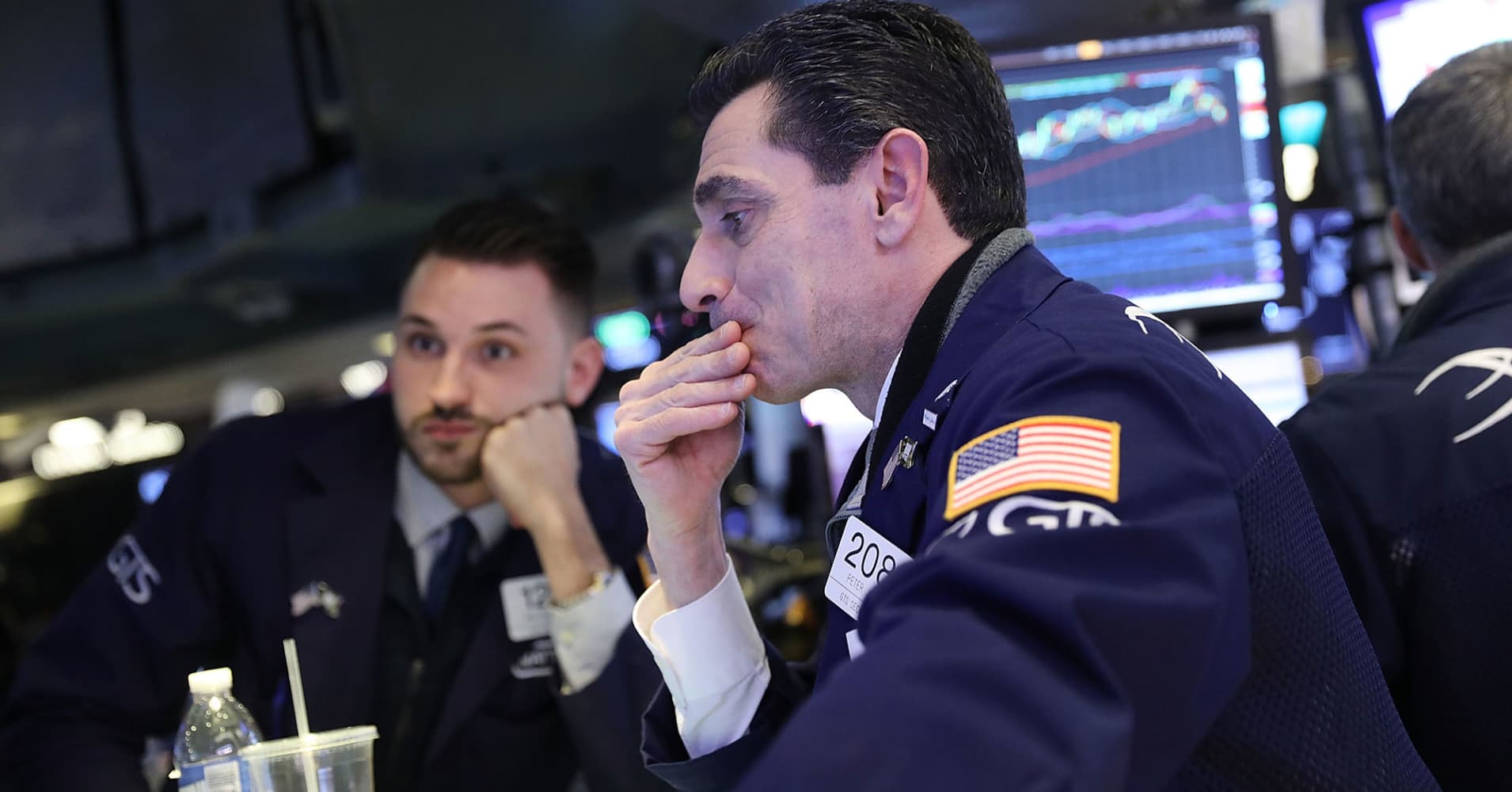
Thursday marks half a year since the stock market made its last all-time high, when the S&P 500 registered 2,872 after surging more than 7 percent in less than four weeks. How to read market’s message since then?
From one angle, it looks like six months of subsidence and struggle. After a 12 percent plunge from that heady high on Jan. 26, the market remains in an unusually protracted consolidation, holding above the February lows but with several rally attempts so far falling well short of the old peak.
The latest upside attempt has been the most promising, and has recently pushed the S&P 500 back above the 2,800 level. The index has simply sat there the past week — preserving the latest little uptrend but showing few signs of accelerating higher. Momentum has been unimpressive for six months since the peak, and it’s allowing the skeptics to pick apart the market on technical and style points: Groups that are supposed to be bellwethers such as transportation, financial and industrial stocks are lagging conspicuously, which has started a sort of vigil for a market top in some corners of Wall Street.
But does this view unfairly penalize the market by regarding it relative to a fleeting thrust to that record level?
Let’s not forget, the S&P is up 4.8 percent little more than halfway through 2018, putting it on track for a perfectly respectable 10 percent return, including dividends. Who would have complained about such a path after the 20 percent gain in 2017, if not for the giddy, unsustainable surge to start the year?
The index has only traded higher than Friday’s closing print during 12 days in the history of the world, which firmly renders the bull market alive until it falters more convincingly.
It’s true that most corrections in bull markets have been fully recovered by the six-month mark, but not all. And there’s nothing particularly unusual about the market going sideways — with uneven sector performance — for several months after a strong, inclusive, low-volatility rally year like 2017.
Investment manager Joe Fahmy of Zor Capital points to 1996 and 2004 as decent comparisons for 2018: digestion years that made little headway in the first half or longer, following unusually strong gains the year before.
I’ve cited 2014 as another useful example. Last year’s lack of pullbacks and persistent run higher was a slightly less impressive version of 2013 (also a postelection year). At this point in 2014, the S&P 500 was up 5.3 percent (compared with 4.8 percent year-to-date right now) but it would chop lower into mid-October before giving way to a strong finish to the year.
The pushback to these comparisons is that we are arguably later in the economic, corporate-profit and capital-markets cycle than in either ‘96, ‘04 or ‘14. And the prospects for this market come down, more than anything else, to whether the cycle is indeed nearing an end, or can stretch on two or three more years.
Binky Chadha, strategist at Deutsche Bank, created a scorecard across various economic and market factors to rate their stage compared with the past three cycles.
 Source: Deutsche Bank
Source: Deutsche Bank
It boils down to the conclusion that it’s not early, but not all that late across the board. And, he adds, the average “late-cycle” phase has lasted more than two years and produced S&P 500 annual returns close to 12 percent.
The market’s behavior itself resembles a later-stage bull market to many cautious observers. It’s become popular to decry the market’s modest gains this year as dangerously narrow, dependent on fewer than a dozen huge technology stocks. That math (tabulating what proportion of a net percentage gain comes from selected huge index components) is inherently misleading. Consider: The fact that Apple (worth more than 4 percent of the S&P) has not gone to zero is equally responsible for the index’s gain, but no one would think that’s a useful observation.
For sure, it has become a more selective, less inclusive market. Only five of the 11 S&P sectors are up this year, and only four up since the market peak. As noted, important groups such as transports and financials seem stuck well below their highs, with tech and consumer growth stocks doing best.
Still, small-cap indexes are up 10 percent, the running daily tally of rising-and-falling stocks remains positive and the equal-weighted version of the S&P is up 3 percent for 2018 — hardly a market dependent on just a small handful of stocks.
One fun result of this six-month sideways slide in stocks is the way the bears accentuate all the good stuff that hasn’t sent the market flying, while bulls focus on all the ill winds that have failed to crash it.
Bank of America Merrill Lynch strategist Michael Hartnett, who has turned a bit defensive, says, “profits, tax cuts, buybacks galore in 2018 … and yet just 9 out of 45 MSCI country equity indices have outperformed 3-month T-bills” this year.
It’s true that S&P 500 earnings growth of more than 20 percent and record pace of share buybacks have not generated a major short-term payoff.
Bulls such as Tom Lee of Fundstrat counter with: “Despite simmering trade tensions (both China and Europe), political tensions and angst about the flattening yield curve, equity markets have managed to rally 120 points since late June and are now within 70 points of an all-time high.”
That, as they say, is what makes a market.
What’s undeniable is that the past six months have made stocks less expensive and less beloved — which should make them less risky. It’s perhaps easier to have confidence that the downside is modest than that the upside exciting. And I’ve made the case that January probably represented a moment of “peak happiness.”
But the weight of the evidence still suggests the January high was not the absolute peak for the market.
Be the first to comment